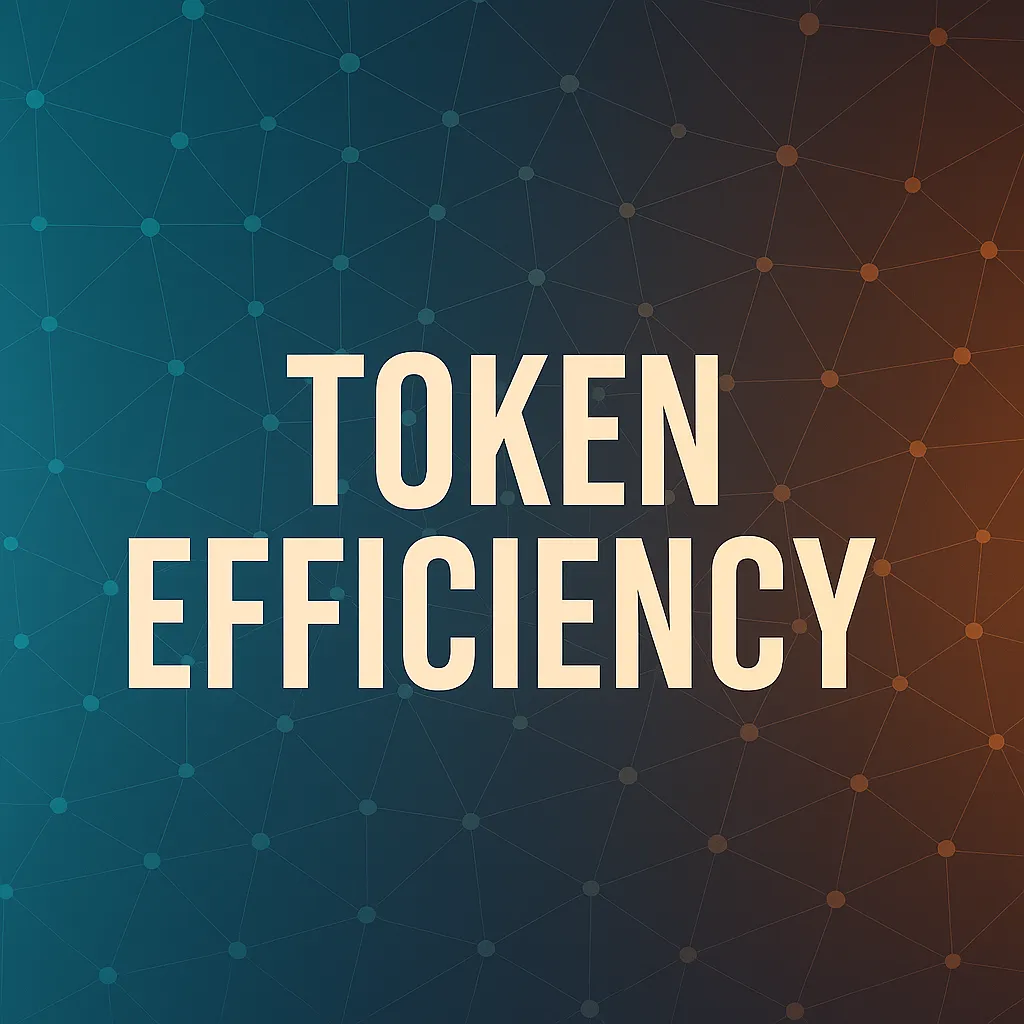You didn’t write an inefficient prompt. You just paid for tokens the model ignored.
Prompt engineering is often seen as a craft of clever wording, but behind the scenes, another force quietly shapes outcomes: token efficiency. Understanding the trade-offs between zero-shot and few-shot approaches will unlock new ways to optimize both output quality and resource consumption.
The Quick Take
You didn't write a bad prompt - your model just read too much. That's the hidden danger of few-shot prompting: it feels efficient, but it might be costing you far more tokens than it returns in quality.
A simple keyword extraction task uses ~26 tokens with zero-shot but ~88 tokens with few-shot prompting. Same task. Over 3x the tokens. Multiply this by 10,000 API calls and you're burning $80 instead of $24.
The Token Tax Reality
Token consumption grows rapidly as you add examples, but performance improvements follow diminishing returns:
| Prompt Style | Prompt Length (tokens) | GPT-4o Cost (@$0.03/1K tokens) |
|---|---|---|
| Zero-shot | 35 | $0.00105 |
| One-shot | 72 | $0.00216 |
| Few-shot (3) | 164 | $0.00492 |
The first few examples improve accuracy sharply. Additional examples yield smaller boosts, plateauing by 4–5 examples.
Format Efficiency Matters
Not all tokens are created equal. The format of your prompt can add invisible weight:
- JSON Format:
{"name": "Alice", "role": "engineer"}→ ~22 tokens - Markdown Format:
- Name: Alice\n- Role: engineer→ ~15 tokens - Plain Text:
Name: Alice, Role: engineer→ ~13 tokens
JSON includes quotes, colons, and braces - all of which consume tokens unnecessarily.
Strategic Token Budgeting
Think of your prompt as a token budget. Spend it where it earns the most value:
Use examples when:
- Tasks are ambiguous or format-sensitive
- Domain-specific terminology is required
- Creative or stylistic emulation is needed
Use instructions when:
- Tasks are straightforward
- Models already understand the domain
- Format requirements can be clearly described
Real-World Trade-Off Example
Instead of three examples for summarization (60–80 tokens), try this instruction tweak (17 tokens):
Summarize the following article concisely, using exactly three distinct bullet points. Each point should cover a main idea without redundancy.
Same accuracy gain, massive token savings.
The Memorization Paradox
LLMs are trained on vast corpora and often already "know" the task. For common use cases like summarization, translation, and Q&A, adding examples can be redundant.
Zero-shot: Translate the sentence into French: "How are you today?"
Few-shot: Multiple examples + the same task
Same output. More tokens. Instruction-tuned models like GPT-4 and Claude 3 perform remarkably well without examples in these domains.
When Few-Shot Is Worth the Cost
Despite the token tax, few-shot prompting is essential for:
- Domain-specific tasks: Medical data classification, legal clauses
- Format-sensitive outputs: Complex structured formats that are hard to describe
- Alignment constraints: Subtle examples that illustrate boundaries
- Creative emulation: Tone, pacing, or stylistic nuance
High-quality examples can do what verbose instructions can't. Here, paying the token tax is a wise investment.
Model-Specific Considerations
Different models tokenize differently - even for the same text:
| Model | Tokenizer | Token Count for "John loves writing technical articles." |
|---|---|---|
| GPT-4o | Byte-Pair Encoding (BPE) | 9 |
| Claude 3 | SentencePiece | 8 |
| Mistral 7B | BPE (custom merge rules) | 10 |
That's up to a 20% variance for the same string. Token efficiency analysis must be model-specific.
Engineering for Efficiency
Token-efficient prompting means:
✅ Starting with zero-shot
✅ Adding only high-leverage examples
✅ Choosing formats that reduce token weight
✅ Prioritizing precision over verbosity
✅ Matching examples to model knowledge
✅ Testing trade-offs between instructions and demonstrations
✅ Avoiding context overflow from prompt bloat
What Makes a High-Leverage Example?
A high-leverage example punches above its weight in guiding model behavior:
- It clarifies a tricky edge case
- It demonstrates a complex format that's hard to describe
- It prevents a frequent misinterpretation
If your example solves one of these, it's likely worth the tokens.
Tools for Token Tracking
- OpenAI's library: Inspect token counts before sending prompts
- Anthropic, Mistral tokenizers: Model-specific analysis tools
- API metadata logging: Most providers return token counts per request
Remember: You're not just feeding a model. You're buying its attention - one token at a time.
Final Thought
The most expensive prompt isn't the one that costs the most tokens - it's the one that wastes them. Start lean, add strategically, and always measure the trade-off between token cost and quality gain.
